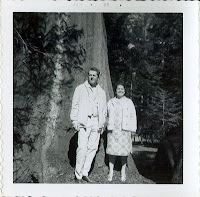 Cold wet autumn has arrived. It has been raining for two days straight. Last week it was a little warmer but the signs were all in the air. I decided that it was time to take out Julia Child’s Mastering the Art of French Cooking and make a little Cassoulet. I must clarify: there are no little recipes in Julia’s book! Cassoulet is a French peasant dish that consists of several meats (vegetarians might want to skip the blog this week) stewed in juices with beans. In Julia’s recipe it is one rather complex recipe with over six pages of directions and two subordinate recipes for preparing some of the items to be included! It is a rather hearty meal and the French normally eat it for their main meal, lunch. In my case it was meant to be a start of a hearty weekend so I prepared it for Friday dinner starting on Wednesday. I don’t know how French peasants managed to eat if they needed to start cooking something 3 days ahead of when they were due to eat it. I envision some kind of kitchen assembly marked Monday for Wednesday, Tuesday for Thursday and so on and so on.
Cold wet autumn has arrived. It has been raining for two days straight. Last week it was a little warmer but the signs were all in the air. I decided that it was time to take out Julia Child’s Mastering the Art of French Cooking and make a little Cassoulet. I must clarify: there are no little recipes in Julia’s book! Cassoulet is a French peasant dish that consists of several meats (vegetarians might want to skip the blog this week) stewed in juices with beans. In Julia’s recipe it is one rather complex recipe with over six pages of directions and two subordinate recipes for preparing some of the items to be included! It is a rather hearty meal and the French normally eat it for their main meal, lunch. In my case it was meant to be a start of a hearty weekend so I prepared it for Friday dinner starting on Wednesday. I don’t know how French peasants managed to eat if they needed to start cooking something 3 days ahead of when they were due to eat it. I envision some kind of kitchen assembly marked Monday for Wednesday, Tuesday for Thursday and so on and so on.  I brought out my old worn out and stained book and proceeded to read and reread all of the steps and make lists for the items I would have to acquire in order to make this plain country dish. I have a small but organized kitchen that was put to the test with every pan I called to duty and just about every square inch of space enlisted in one way or another. I think French peasants must have eaten a different version than the one our infamous Julia concocted. I will only give you some of the highlights that may well explain the accompanying images.
I brought out my old worn out and stained book and proceeded to read and reread all of the steps and make lists for the items I would have to acquire in order to make this plain country dish. I have a small but organized kitchen that was put to the test with every pan I called to duty and just about every square inch of space enlisted in one way or another. I think French peasants must have eaten a different version than the one our infamous Julia concocted. I will only give you some of the highlights that may well explain the accompanying images.
Collage view of my kitchen during cooking process
In essence this Cassoulet consists of four to six dishes which are each cooked individually to acquire their own flavor and texture. At the end they are assembled in a large Cocotte (Dutch oven) where they imbue each other’s flavor and arrive at the grand dish that is Cassoulet. This was a pork and lamb Cassoulet but you can make it with anything and everything. So you have a recipe for pork, another for lamb, there is a sausage component whether you make it our buy it, a bean element, all flavored with bacon, salt pork, lamb and pork bones for creating a sauce with stock and wine to accent the flavors. Of course there are spices, carrots, onions and everything you can almost think of stuck in cheesecloth to create an infusion of flavors.
Top Right: Pork, Bottom Left: Bacon, Bottom Right: Sausage
The grand moment comes, after three days of cooking, when you assemble it in layers and set aside until you are ready to bake for a final hour and a half and you add the final bread crumbs and clarified lard (that you extracted from the cooking process) to create the final crust on the casserole. It may sound unusual, but it tastes divine.
We were seven who barely made a dent, even with multiple helpings, in the 8 quart Staub Dutch Oven, leaving almost half for the rest of the weekend. Consumed with a wonderful Rioja and a White Burgundy that fit the palate. It was followed by a simple salad and then with a scrumptious Red Velvet Cake for dessert (that I forgot to photograph). We spent hours at the table talking and laughing as we had not for a while. If it sounds mouth watering, it was. Now, a rest and then let’s see what’s next. Happy autumn!

Some of the final bounty from the garden

































